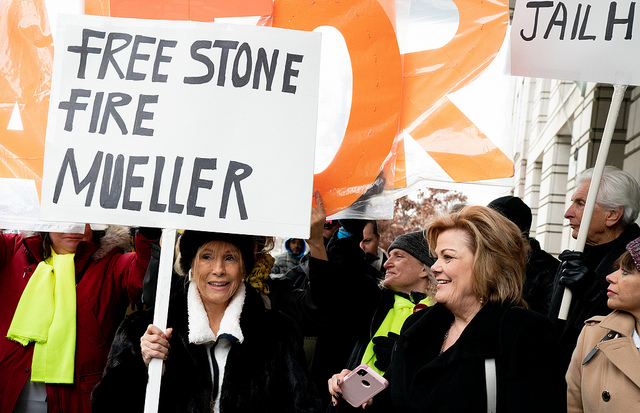Why the FBI Sent So Many Agents to Roger Stone’s Home
Roger Stone says that more than two dozen FBI agents executed a search warrant at his house. That’s generally consistent with the bureau’s standard operating procedure.

Published by The Lawfare Institute
in Cooperation With

Editor’s Note: This article is available in audio format on the Lawfare Podcast Shorts:
In a previous article, I explained that it was entirely lawful and justified for the FBI to arrest Roger Stone. Though there are several reasons, I focused on one—the fact that Stone threatened to kill a witness. That threat alone supports law enforcement’s request for an arrest warrant, which a federal judge granted. The alternative—a summons that would permit Stone to voluntarily surrender—is not a matter of right, and Stone forfeited that privilege with his words and conduct.
Relatedly, there seems to be some consternation about the number of FBI agents who executed the court-authorized search warrant at Stone’s home. I do not know the precise number of special agents and other FBI personnel present, but Stone claimed there were 29 agents. Though that sounds like a lot, it could be about right—and wholly appropriate.
Contrary to reckless assertions, a law enforcement cadre of that size was neither excessive nor designed to send a “message” to Stone. Further, it would not have been ordered or suggested by Special Counsel Bob Mueller or FBI Director Chris Wray. Rather, those operational decisions—how many agents to send on a particular mission—would have been delegated to the FBI supervisors in Stone’s jurisdiction.
This delegation concerning the mechanics of the execution of the warrant is typical and proper. In broad strokes, the FBI could bring as many as 24 agents and other personnel to this type of search and arrest. The actual number will turn on the nature of the operation and the decisions made on the ground by local supervisors.
That seemingly large number is also designed to ensure the safety of the agents, the subject and the neighborhood in which the search is conducted. There are a couple of principles at play.
First, everyone—both the agents and the person being arrested—is safer if the FBI arrives with sufficient and significant force. If two agents show up, a subject might decide to fight or run. The odds—as the subject might calculate—of fighting and winning, or of fleeing, are not awful. If 30 agents arrive, and the home is literally surrounded, a subject is much less likely to make a bad choice and so the risk of flight or injury to everyone is lower.
Second, the more law enforcement personnel that are present, the more quickly and efficiently a home can be searched. Two dozen agents can finish their work and leave the neighborhood more quickly than two agents. Agents in the FBI are highly trained, and many will have specific skills and assigned duties at an arrest and search scenario. Remember, the FBI had two warrants that morning—one for Stone’s arrest and one to search his home—both authorized by a federal judge who found the government met the requisite Fourth Amendment probable cause standard. Having two warrants to execute, in and of itself, requires more agents.
Generally, the FBI would bring an entry team, an arrest team, a perimeter security team and an evidence response team. The entry team is usually the smallest, at around three to four agents, and the evidence response team the largest, perhaps with 10 to 12 agents and personnel. The entry team would approach the house and enter it, and then secure it so it is safe for others to go in. The security team, of six to eight agents, would ensure that bystanders could not approach, for their own safety and the safety of the agents inside the home. While the arrest team of maybe five to six agents was doing its work, the evidence response team would be responsible for collecting and processing evidence from the home, pursuant to the court-authorized warrant, and would likely include a photographer and a computer forensic expert or two.
Throw in a small team to transport Stone to the courthouse, an on-scene supervisor and, possibly, a public affairs officer, and that could add up to more than two dozen FBI personnel at and around Stone’s home.
The FBI would likely have coordinated with local police on the search, and that local department might help block streets and control traffic. So add in some additional cars and officers. Because the Stone home backs to water, it is possible that local police officers were there on a boat.
Conversely, a court-authorized search of an uninhabited storage shed would look very different. There would be no need for entry, arrest or transport teams, for instance, and so significantly fewer agents would be needed. Court-authorized searches occur every day around the country, and the FBI has well-established standard operating procedures for accomplishing them with the laudable goal of reducing risk of injury, flight or disruption.
Stone has made numerous false statements—including to Congress, for which he was charged with five federal felonies—and bizarre and absurd accusations in the press. But in a shocking development, his claim that 29 agents were present for the search of his home is probably true. He deserves some credit for that.



.png?sfvrsn=48e6afb0_5)

